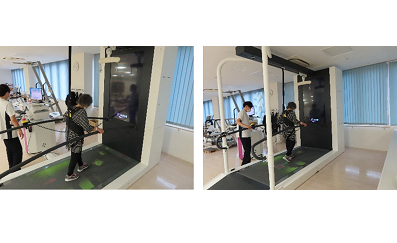C-Mill VR+ case report: High-performance “Smart Rehabilitation” in Japan
Hocoma
In November 2019, Tokachi Rehabilitation Center at the Hokuto Social Medical Corporation Head Quarter in Japan kicked off the “Smart Rehabilitation” project, which is advocated and promoted by the Department of Rehabilitation Medicine at Keio University School of Medicine.
In this project, the team at Hokuto Hospital are promoting further smoothing of their rehabilitation program and seamless treatment that meets precisely with each individual’s symptom, by providing a combination of high-performance rehabilitation equipment with virtual reality and robotics, and conventional rehabilitation.
In the latest case report on the Hocoma Knowledge Platform, Motoki Koiwa, Vice Senior Manager, and Ryosuke Takahashi, Chief Rehabilitation Dept., introduce the high-performance rehabilitation equipment in their hospital.
Introduction
C-Mill VR+ (hereinafter C-Mill) is a treadmill device for balance and walking training, and we are the second facility (first in Hokkaido) introducing this product in Japan. The main feature is various illustrations that are projected on the front display and the treadmill. So one can enjoy training balance and walk by playing a game that is displayed on the front display. In addition, by practicing “safe”, “fun”, and “repeating” movements of stepping and straddling the cues at one’s feet, users can acquire, for example, walking that one does not lose balance even when the road surface changes. Since various combinations of these balancing and walking tasks can be set on C-Mill, setting tasks meeting with each patient’s ability could be achieved.
In addition, because C-Mill not only offers training but it also performs various evaluations, including static/dynamic balance and walking assessment, it is a useful device for seamlessly carrying out a series of evaluation, selection of exercise tasks, and confirmation for the effect of training. In our hospital, C-Mill is used for patients with a wide range of symptoms such as locomotor disorders, cerebrovascular diseases, and disuse syndromes. The immediate effect is especially observed on patients with cerebrovascular disease for improvement of balance function and walking posture.
Case Study
Read the full Case Study on the Hocoma Knowledge Platform.

